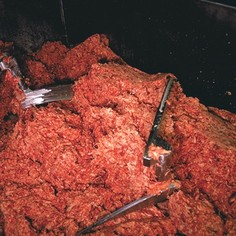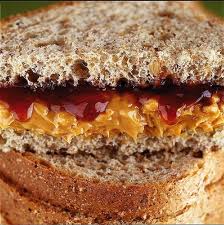Last weekend, my wife and I were able to take advantage of a great opportunity. In short, some good friends of mine recently had their "Harajuku Moment" (or personal tipping point) with regards to personal health. They requested that Kelsey and I provide them with some nutrition lessons and give their current dietary regimen a "makeover," if you will.
Given that they have a beautiful lakehouse - and offered to lodge us there for the weekend on top of providing all the food - we replied, "When do we start?!"
Needless to say, the experience was very rewarding. Throughout the weekend, we prepped+cooked meals with them, along with putting together a “mini packet” comprised of easy recipes, quick & dirty checklists to run through every time they prepare a meal, a sample grocery list, and a brief chart of healthy fats, proteins, carbs, and supplements. We were also able to answer some questions and debunk some myths for them:
Should I avoid eating close to bedtime?
What should I eat before/after a workout?
How much red meat should I consume/avoid consuming?
Should I avoid egg yolks like the bubonic plague?
 Kelsey and I were able to provide this family with some very practical strategies they could begin applying to their lives immediately. Strategies that would allow them to experience greater mental clarity and energy levels, lower blood sugar, reduce the risk of heart disease, and all-in-all fix a lot of “stuff” going on in their bodies. And these strategies were all very uncomplicated.
Kelsey and I were able to provide this family with some very practical strategies they could begin applying to their lives immediately. Strategies that would allow them to experience greater mental clarity and energy levels, lower blood sugar, reduce the risk of heart disease, and all-in-all fix a lot of “stuff” going on in their bodies. And these strategies were all very uncomplicated.
We didn’t tell them to count calories.
We didn’t tell them to weigh their food.
We didn’t tell them they had to buy everything “organic” (whatever that means anymore).
We didn't them them if they failed to eat Paleo then their world would be over immediately.
This entire process got me thinking….many of us – whether we are the teacher or the student - tend to overcomplicate topics in the exercise and nutrition realm. Given that I’m a strength & conditioning coach, I often fall on the teaching side of things, so I’ll briefly touch on this subject from that perspective.
When I first started in this industry as a personal trainer, I made things way, way, WAY too complicated. Whether it was coaching someone through a squat or something as simple as a X-Band Walk, I practically gave the poor client a short essay on how to perform the exercise.
 The same thing with regards to nutrition advice. I gave them wayyy too much information. All this ended up doing was overloading the person and didn’t actually help them get on their feet toward reaching their goals.
The same thing with regards to nutrition advice. I gave them wayyy too much information. All this ended up doing was overloading the person and didn’t actually help them get on their feet toward reaching their goals.
My heart was in the right place, but my head was not.
For those of you reading who teach exercise (be it in a professional setting or simply to a friend or family member), please learn from my mistakes. Don’t overwhelm the person who is listening to you. Give them one cue and explain why they should care.
When you teach someone a squat for the first time, they don’t care if you know that the rectus femoris is the only quadricep that crosses both the hip and knee joints, or that you understand the biceps femoris is the only hamstring that externally rotates the femur along with extending the hip.

Please.....let's get over ourselves.
Practical Application
Let’s put this into a practical scenario, shall we? Pretend that your teaching someone to squat for the first time. I’ll provide the “fail” version, along with a strategy you could take that will lesson the odds of your student completely hating you and being overwhelmed.
Female Volleyball Player. First Session.
Fail: "Okay, next, we’re going to squat. First, we’re going to hold the weight at our chest, or “goblet position” because if you don’t, your body will likely shut down and move like a pregnant seal, creating aberrant movement as a result of a perceived threat due to lack of stability…although you might still suck due to poor ankle dorsiflexion, inhibited glutes via reciprocal inhibition of the hip flexors, and/or tight lats. You’re then going to turn your feet out, point the big toe up, but keep your weight distributed evenly on your feet, then sit BACK, don’t fall forward!, keep those shoulder blades down and back into your back pockets, pull yourself down via your hip flexors, CHEST TALL! don’t slouch now, act like your sitting on an egg so you don’t slam into the box, then EXPLODE up so you can access your fast twitch motor units and improve your rate of force development."
Win: "Okay, first, we’re going to squat. This is going to help improve your vertical jump and allow you to move faster on the court. Watch how I do it, and then do your best to replicate it." *Coach then demonstrates a few reps of the goblet squat to box*
See the difference?
In the second scenario, we gave the athlete a reason to care, and then coached them by showing them. Ninety nine times out of a hundred, the athlete/client will perform the movement better in the second scenario rather than the first.
Is it still going to be perfect? No. But you can tweak and help them throughout the subsequent sets, adding just one or two coaching cues and keeping it there for that day. Throughout the following weeks, you help them with one small improvement at a time. Rome wasn't built in a day, ya know?
Now, I realize there are exceptions. Some people are more “audible learners” as opposed to visual learners, and others actually do want a lot of detail (usually those are people who already have some lifting experience and are involved in the field in some form or another). But I hope you get the point.
The same thing can apply to fat loss clients, someone dealing with knee pain, or those seeking some extra help in the kitchen.
Keep it simple FTW.












